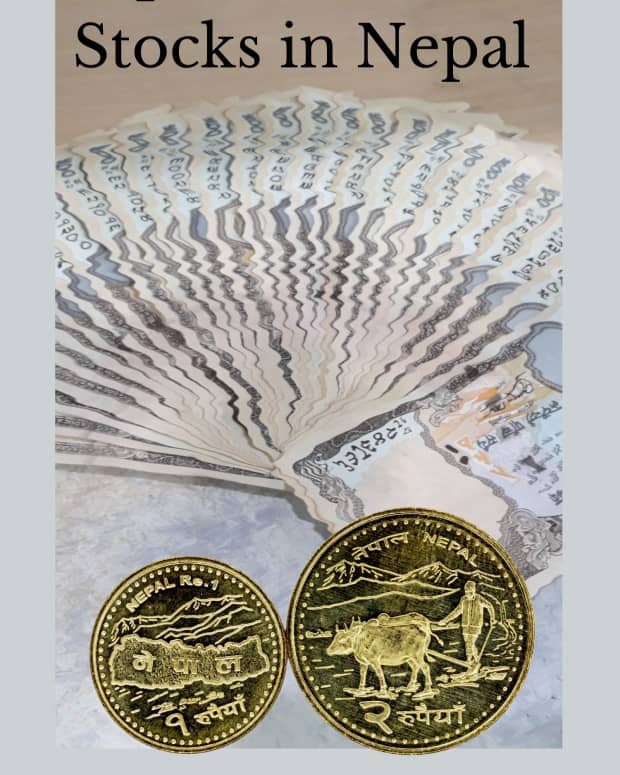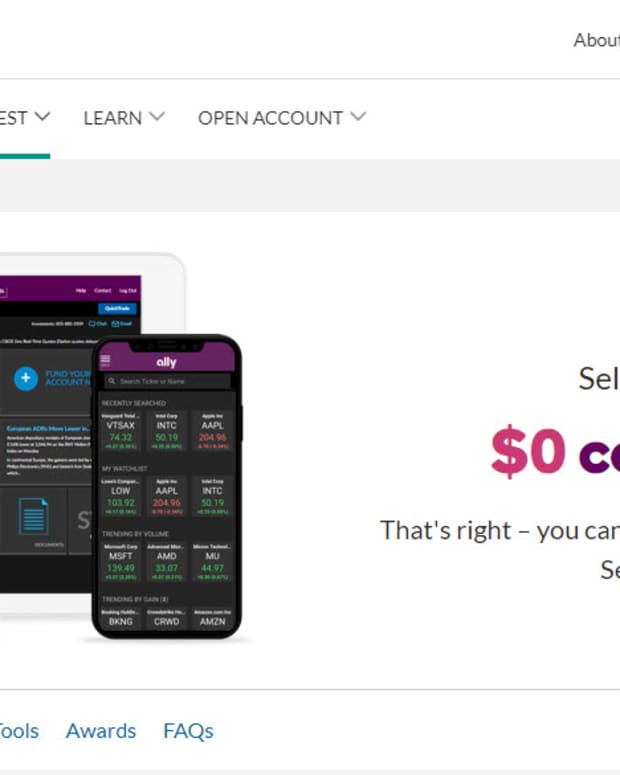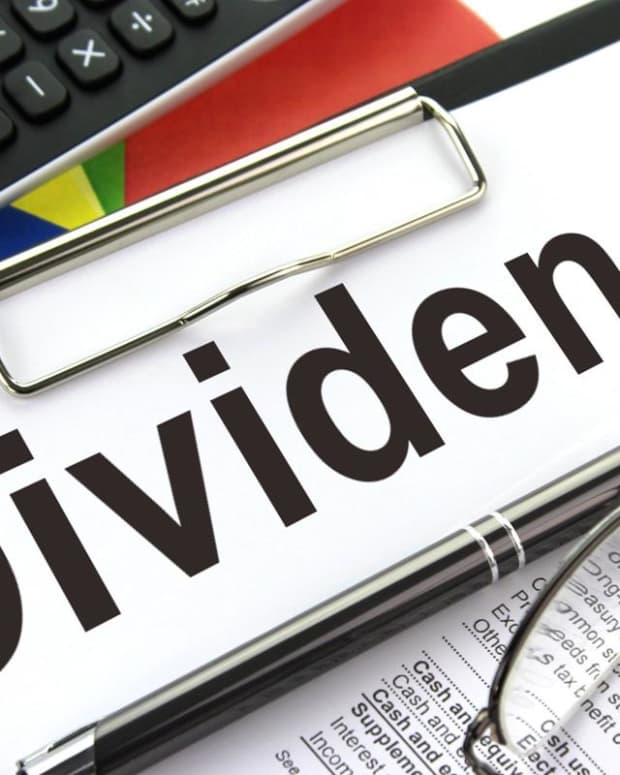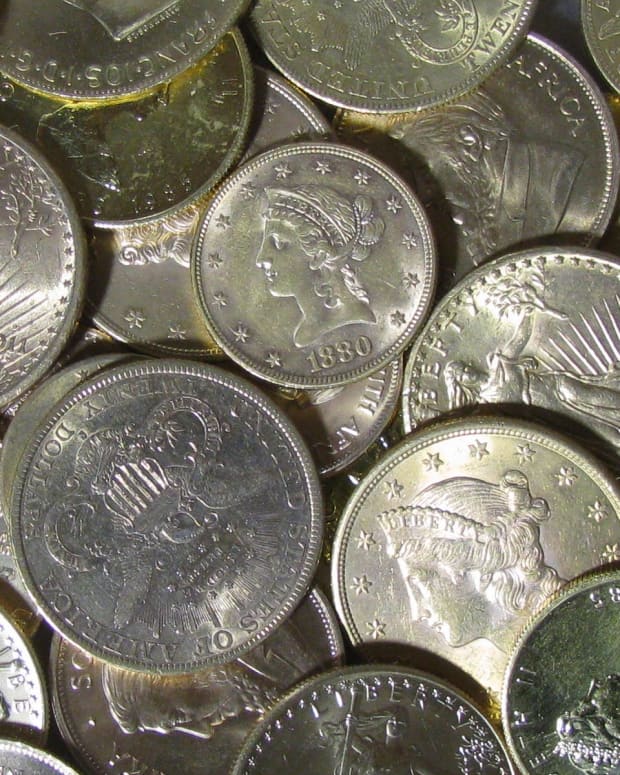Tips for Picking Quality Dividend-Producing Stocks
Doug West is a retired aerospace engineer and small business owner who writes about investing.
Many investors believe that the best way to get positive long-term results with your money is by investing in dividend stocks. However, not all stocks that pay dividends are a good investment, because many of these stocks are extremely volatile. While the investor may see significant dividends for a few years, they will also suffer when the business performs poorly and its stock price crashes. For this reason, it is important to find the right balance between stock price stability and dividend payouts.
股息是什么?
股息是什么?Dividends are a way for companies to distribute their earnings from a particular quarter to their shareholders. These dividends are usually released in the form of cash payments, stocks or other financial properties.
Most blue chip companies will pay out a modest level of dividends every quarter. Instead of trying to pay significant dividends in one or two quarters, these companies try to achieve consistency with both their stock price and dividend payouts.
Surprisingly, individuals who take a passing interest in financial investing may not hear about the benefits of dividends. This is because there are other types of investment that seem more exciting and adventurous, especially during bull markets.
For example, investors will spend their money on hot penny stocks, in hope that a few of these companies will grow significantly and give them significant returns on the investment. In addition, younger investors may find day trading more interesting, because there is a lot of excitement involved in buying and selling stocks to try and make a sustained profit every single day. Dividends may seem rather boring and uninteresting in comparison.
However, there is a reason that investors return to dividend paying stocks in mass whenever the market turns downwards for a sustained period of time. These stocks may grow modestly, while the dividend payments will not make anyone rich overnight, but they present real value for people who want to grow their money over time. In addition, the risk associated with dividend stocks is much lower than the other forms of investment we mentioned in the previous paragraph.
Five Tips for Picking Quality Dividend-Producing Stocks
- Reasonable P/E and Payout Ratio
- Long Tradition of Paying Steady to Increasing Dividend
- Dividend Aristocrats
- Beware of Companies That Overpay
- Trust the Basics
1. Reasonable P/E and Payout Ratio
The Price-Earnings Ratio, or P/E ratio, is a way of determining how much investors are willing to pay for a particular stock in relation to that stock’s earnings. It is determined by dividing the price of a stock by the company’s earnings per share.
For example, a company that trades at $18 per share with annual earnings per share of $3 would have a P/E ratio of 6. This is a way for investors to know how much they have to invest in a company in order to receive a dollar of the company’s earnings. In this case, it means that investors are willing to pay $3 in order to receive $1 of the company’s earnings in any given quarter.
If a company has a very high Price-Earnings Ratio, it means that investors are expecting high earnings in the future. If the P/E ratio is very low, it means one of two things. Either the company is extremely undervalued or it is doing very well compared to the past few years.
By itself, the P/E ratio is not a defining way to understand whether a company is worth the investment. But it is possible to look at a company’s P/E ratio over several years in relation to the average P/E ratio for the industry.
Another metric for measuring a company’s value to an investor is through the payout ratio. This is calculated by taking the dividends per share and dividing them by earnings per share. If a company has earnings per share of $1 and their dividends per share are $0.50, they are paying out at a 50 percent ratio.
对市盈率和股息支付ratio, it is important to go with companies that have steady values. While you do not want to invest in companies with consistently low ratios, it is also a good idea to avoid companies that have very high P/E or payout ratios. This is especially true for payout ratios, because companies that pay out more than 50 or 60 percent of their earnings per share in dividends are probably going to be extremely volatile with respect to their stock price.
2. Long Tradition of Paying Steady to Increasing Dividend
在选择最好的股票购买股息purposes, look for companies that have a history of paying out dividends. Ultimately, investors are not attempting to double their money in five or six years through dividends. The idea is to see significant returns over the long term, which means you should look for companies that consistently pay out dividends for ten, twenty or thirty years in a row. It is these companies that will represent the most value down the road, not companies that have flashy payout ratios of 80 or 90 percent over a two to three-year period.
3. Dividend Aristocrats
确定一个公司支付的最佳方式ividends on a consistent basis is by glancing through the list of dividend aristocrats. This is a label given to companies that pay out an increasing amount of dividends for at least 25 years in a row. Not only are these companies paying dividends to their investors every year, but they gradually increasing the dividend payouts over time. Companies such as Coca-Cola, Lowe’s, PepsiCo, Universal and McGraw-Hill are found on this list.
Companies on the Dividend Aristocrats list are not necessarily showing increasing profits every quarter for 25 years. In fact, many of these companies have endured bad quarters and bad years over this time. However, these are the companies that agreed on a stable dividend policy and stuck to this policy every single quarter. Even if their earnings fell by 20 or 30 percent, they still increased the dividend payout to their investors.
The annual dividend amount from the companies on the dividend aristocrats list ranges from 0.5 to 4.5. The dividend yield ranges from 0.5 percent to 6.5 percent. American States Water is the company at the “top” of the list, because they have continued to pay increasing dividends for 61 years in a row.
4. Beware of Companies That Overpay
There is a tendency for new investors to find themselves enthralled with companies that are paying huge amounts of dividends for the past few years. Some of these companies have dividend yield percentages that are extremely high. It is tempting to invest with one of these companies, but it is a huge mistake if you are serious about making stable, long-term investments. Companies that have high dividend yields only have this high number because their stock price dropped sharply in the relevant time period. It is better to trust companies with a stable dividend yield, as mentioned earlier.
Similarly, companies that are paying out 70 to 90 percent of their earnings per share in dividends are dangerous for investors. These companies are making investors happy in the short-term, but paying out so much of their cash flow means that they cannot survive a few bad quarters. If a company like Coca-Cola has a few bad quarters, investors do not need to worry. In contrast, a company with a 90 percent payout ratio will have little financial wiggle room to survive those bad quarters. Their share price will tank and the investor will end up losing much more money than they gained from those high dividend payouts.
5. Trust the Basics
The global economy is always in flux. There are periods of sustained highs, but investors must remember that economic downturns are always around the corner. If the 2008 financial crisis taught us anything, it is the fact that all bubbles will burst eventually.
This is why long-term investors are encouraged to put their money in the basics. Trust companies that produce goods that are essentials to most people. For example, companies dealing in healthcare, packaged food, and basic utilities are preferable to flashy tech stocks. When people have less money, they buy the things they need, not the things they want.
Dividend Payout Policies
When considering the type of stocks to buy for significant dividend earnings, it is important to understand how companies go about distributing their earnings through dividend payments. There are four main payout policies that companies employ when distributing dividends.
- Stable Dividend Policy: This is the type of policy you will see from most “blue chip” companies. They aim to produce stable dividend payments, despite their earnings performances in a particular quarter. For example, a company may have a fantastic quarter that exceeded expectations, but it will only raise dividends modestly to continue the intended trajectory. Similarly, a particularly bad quarter for the company will not cause its dividend payments to fall.
- Target Payout Ratio: A company’s board of directors will sit down and decide their ideal long-term dividend-to-earnings ratio. Over the next ten to twenty years, the company will aim to meet this dividend-to-earnings ratio each year. This ratio can result in stable dividend payments from major companies, but it can lead to inconsistency if the company yo-yos between good and bad earnings in successive years.
- Constant Payout Ratio: The company decides that their dividend payouts will always be a certain percentage of earnings. With this policy, the company may pay out significant dividends if they have a great quarter, but it could also pay out nothing if it has a bad quarter.
- Residual Dividend Model: Companies will their cash flow for a particular quarter and make it a priority to fulfill all capital expenditure obligations. If there is money left over, this is paid in the form of dividends. This model can lead to significant dividends in certain years, but companies that use this model are also wildly inconsistent. Since they are paying out all left over cash flow to investors in dividends, these companies are not able to withstand a few bad quarters with the same stability as a blue chip company.
Dividends and Compound Interest
While we are all familiar with the concepts of compound interest and how they can result in exponential financial gains, not many are aware of how reinvesting dividend money can result in similar compound gains.
Investors who put a majority of their money in stocks that pay out dividends can do one of three things with their money. They can either use that money to buy other financial instruments, such as bonds or gold. They can put that money in a savings account at measly interest rates of 1 percent per year. Or they can reinvest this money in other stocks that pay out dividends. Some investors will even double down and reinvest this money in the same companies that paid them the dividends in the first place.
As an example, let us say that an investor takes $1,000 and invests in the stocks of a company that provides a 10 percent annual return through dividends and share price increases. At the end of a year the investor has $1,100. They can either take that $100 and put it in a savings account, or they can reinvest that money in more stock.
If they reinvest the money in the same stock, they will start with $1,100 in stocks in year two. If the annual return for the company in the second year is also 10 percent, the investor ends up with $1,210. The investor gained an extra $10 by reinvesting their dividends into the company’s stock.
While these gains are fairly modest after two or three years, they really begin to add up after 10 or 20 years. For example, if the same investor continues to see a 10 percent annual return from the company for 10 straight years, and he reinvests the dividend money in more stock, the investor ends up with $2,593.75 at the end of 10 years.
We use a 10 percent annual return in the example because dividend-paying stocks averaged around 11 percent in annual returns over the past 75 years. While such returns sound incredible, prospective investors must also remember that by reinvesting their dividend money, they are tying up all of that capital in company stocks. It is very important to only attempt this compounding strategy with trustworthy dividend stocks.
Example: Consolidated Edison (Symbol: ED)
To illustrate the concepts discussed above, take the example of the utility company Consolidated Edison that provide power to New York and New Jersey. The company had been around for over a century and has paid an increasing dividend for the last four decades. With a dividend yield of 4.3 percent and a payout ratio of 75 percent this stock fits the profile of a good dividend payer.
References
- Peters, Josh.The Ultimate Dividend Playbook: Income, Insight, and Independence for Today's Investor. John Wiley & Sons, Inc. 2008.
- West, Doug.Make Your Money Grow with Dividend Paying Stocks. Revised Edition. C&D Publications. 2016.
This article is accurate and true to the best of the author’s knowledge. Content is for informational or entertainment purposes only and does not substitute for personal counsel or professional advice in business, financial, legal, or technical matters.
© 2016 Doug West

















